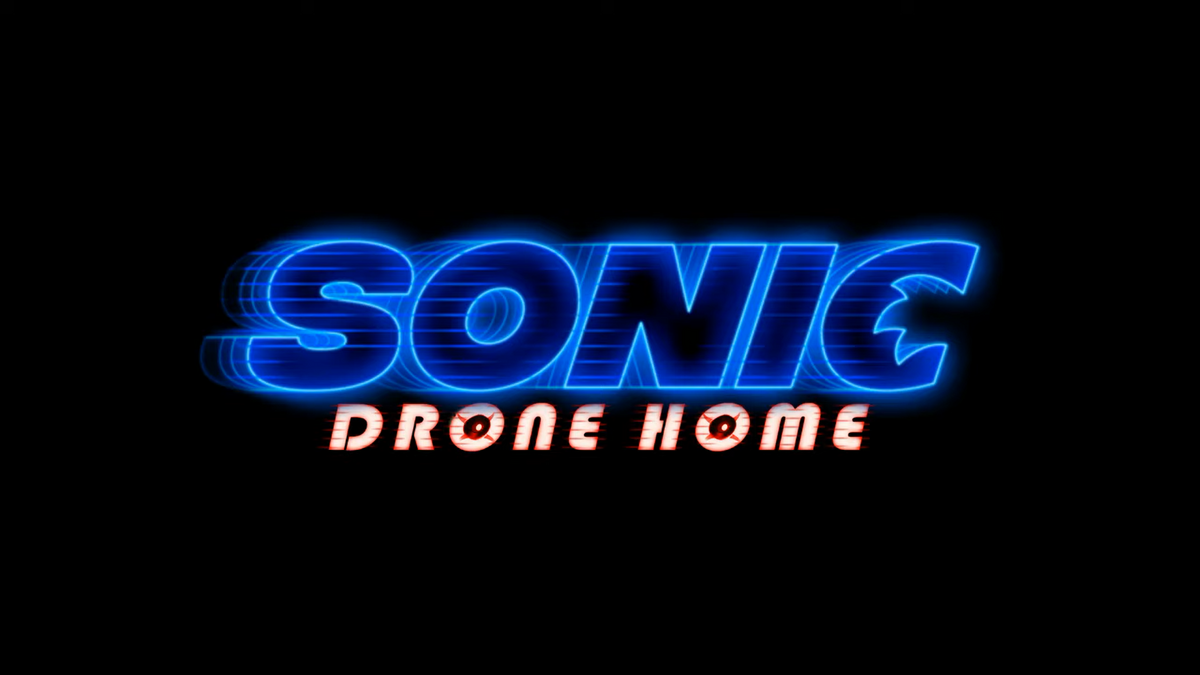Sonic Drone Home represents a fascinating convergence of sound technology, drone capabilities, and smart home automation. This innovative concept explores the integration of sonic technologies into home design and functionality, offering a range of potential applications from enhanced security and entertainment to automated home management. The use of drones to deliver these sonic capabilities adds another layer of complexity and opportunity, promising a future where sound plays a far more active role in our daily lives within the home environment.
This exploration delves into the technological aspects, user experience, safety considerations, and future trends associated with sonic drone homes. We examine the various types of sonic technologies involved, discuss the challenges of integration, and consider the ethical implications of such a system. Ultimately, we aim to provide a comprehensive overview of this emerging field and its potential impact on how we live, interact with, and experience our homes.
Sonic Drone Homes: A New Era in Residential Technology

The concept of a “sonic drone home” represents a convergence of advanced acoustic technologies, drone delivery systems, and smart home automation. This innovative approach promises to revolutionize how we interact with and experience our living spaces, offering enhanced security, entertainment, and accessibility. This article explores the defining characteristics, technological underpinnings, user experience, safety considerations, and future potential of this emerging field.
Defining “Sonic Drone Home”

A sonic drone home integrates sound-based technologies into the home environment, utilizing drones for both the delivery and deployment of these capabilities. This encompasses a broad spectrum of applications, from enhanced security systems using ultrasonic sensors to personalized entertainment experiences through spatial audio. Architectural considerations might involve designing homes with optimized acoustic properties to maximize the effectiveness of these sonic technologies.
For instance, sound-dampening materials could be strategically placed to enhance the clarity of audio in specific areas. Conversely, sound-diffusing materials could be used to create more ambient and less focused sound environments.
The innovative sonic drone home technology offers exciting possibilities for future smart homes, but even cutting-edge tech can face unexpected disruptions. For instance, consider the current situation with Rempe of Rangers to have in-person hearing with NHL Player Safety ; such unforeseen events highlight the need for robust systems that can adapt to various circumstances. Ultimately, the reliability of a sonic drone home system rests on its ability to handle unforeseen problems, ensuring seamless operation regardless of external factors.
Examples of sound integration in home design include using embedded speakers for immersive audio experiences in living rooms, strategically placed ultrasonic sensors for intrusion detection, and personalized soundscapes to promote relaxation or focus in different rooms. Sound could even be used to subtly guide occupants through their homes, providing haptic feedback via strategically placed actuators.
| Feature | Application | Benefits | Drawbacks |
|---|---|---|---|
| Home Security | Ultrasonic intrusion detection, sonic deterrents | Early warning system, non-lethal deterrent | Potential for false positives, limited effectiveness against determined intruders |
| Entertainment | Spatial audio, personalized soundscapes | Immersive experiences, customizable ambiance | High initial investment, potential for audio interference |
| Home Automation | Voice control, sonic feedback for smart devices | Hands-free control, enhanced accessibility | Privacy concerns, potential for system malfunctions |
Technological Aspects of Sonic Drone Homes
Several sonic technologies could be integrated, including ultrasonic sensors for security, directional speakers for personalized audio, and haptic feedback systems. Drones could deliver and reposition these sonic components as needed, offering flexibility and adaptability. However, challenges exist in integrating these technologies, including power requirements for both drones and sonic devices, as well as ensuring the safe and reliable operation of these systems within a residential setting.
Furthermore, the integration of the drone system with existing home infrastructure and smart home automation needs careful planning.
System Architecture: A central control unit manages the interaction between drones, sensors (ultrasonic, microphone arrays), and the home automation system. Drones act as mobile nodes, deploying and retrieving sonic components based on user commands or pre-programmed routines. Sensors feed real-time data to the central unit, enabling dynamic adjustments to the sonic environment. The home automation system provides a unified interface for user interaction.
The development of sonic drone home technology is progressing rapidly, offering exciting possibilities for the future. Interestingly, keeping track of such advancements might require a similar level of focus to analyzing the key players in a major football match, such as checking the Aston Villa vs. Man City lineups, confirmed starting 11, team news before kickoff.
Ultimately, both require careful observation and strategic planning for optimal results; returning to sonic drones, their potential impact on various sectors is significant.
Drone Communication: Drones communicate with the central control unit wirelessly, utilizing low-latency protocols for real-time control and data transmission. They also employ obstacle avoidance technology to navigate the home environment safely.
Power Management: A robust power management system is essential, incorporating efficient batteries for drones and power-saving modes for sonic devices. The system might also incorporate solar panels or other renewable energy sources to minimize environmental impact.
User Experience and Interaction, Sonic drone home
Users might interact with a sonic drone home through voice commands, a dedicated mobile app, or a touch screen interface. The system could learn user preferences over time, automatically adjusting sonic environments based on activity and context. This is particularly beneficial for users with disabilities, providing enhanced accessibility and control over their environment.
- Voice-activated control
- Mobile application interface
- Touchscreen control panel
- Gesture-based interaction
Sonic environments could be tailored to individual preferences, creating calming soundscapes for relaxation, focused soundscapes for work, or lively soundscapes for entertainment. The system could also adjust sound levels and profiles automatically based on the time of day or the presence of other individuals in the home.
Safety and Ethical Considerations
Potential safety hazards include the risk of drone malfunction, potential hearing damage from high-intensity sound, and the possibility of sonic interference with other electronic devices. Ethical concerns involve data privacy and security, ensuring the responsible use of sound-based surveillance technologies. A careful balance must be struck between the benefits of enhanced security and the potential infringement on personal privacy.
- Regulations on drone operation within homes
- Safety standards for sonic devices to prevent hearing damage
- Data encryption and access control protocols to protect user privacy
- Ethical guidelines for the use of sound-based surveillance technologies
Future Developments and Trends

Future sonic drone homes may incorporate advanced AI and machine learning capabilities for predictive maintenance, personalized sound experiences, and proactive security measures. Integration with smart city initiatives could allow for coordinated responses to emergencies or optimized energy consumption. For example, drones could be used to detect gas leaks or water damage, alerting residents and emergency services promptly. These systems could also integrate with broader smart city infrastructure, sharing data and coordinating responses with other systems.
A future sonic drone home might feature seamlessly integrated sonic components, near-silent drone operation, and AI-powered predictive maintenance. The system would anticipate user needs, automatically adjusting the sonic environment based on occupancy, time of day, and individual preferences. The aesthetic integration of sonic technology into the home’s design would be seamless, blending functionality with elegance.
The concept of the Sonic Drone Home, while still largely futuristic, presents a compelling vision for the future of home technology. The potential benefits, ranging from enhanced accessibility for individuals with disabilities to innovative entertainment and security systems, are significant. However, careful consideration of the ethical and safety implications is crucial for responsible development and implementation. As technology continues to advance, the integration of sound and drone technology into our homes promises a richer, more responsive, and potentially more efficient living experience, but only if approached with a thoughtful and responsible approach to its design and deployment.
Common Queries
What are the potential privacy concerns of a sonic drone home?
Concerns exist regarding the potential for unauthorized listening or data collection through sonic sensors. Robust encryption and data security protocols are essential to mitigate these risks.
How much would a sonic drone home system cost?
The cost would depend heavily on the complexity of the system, the number of drones and sensors used, and the level of automation desired. Current estimates are speculative due to the technology’s nascent stage.
What happens if a sonic drone malfunctions?
Safety mechanisms, including fail-safes and emergency shutdown protocols, would be crucial components of any sonic drone home system. Redundancy in the system would help minimize disruption from single component failures.